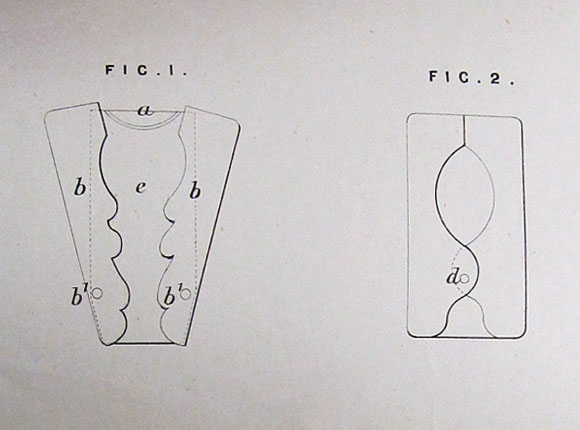Floral Bouquet Pincer
Name assigned based on external decoration

Needle Case (photographs from eBay)
This needle case was sold on eBay years ago and only low resolution photographs are available. If you have this needle case or know
someone who has it, please contact us so better photos can be added to this website.

Patent (patent #3517 in incorrectly stamped on the actual needle case)
Design Details
Needle Case Type: |
Flat-Names |
Patent/Registered to: |
William Avery - Redditch Manufacturer |
Patent/Design Representation #: |
Mechanical Patent #: 1473 (Fig. 1 & 2) |
Patent/Design Registration Date: |
May 21, 1870 |
Location of Patent/Design Registration: |
British Library - Business and Intellectual Property Centre - London
|
Reference #: |
1870-1473 |
Dimensions: |
2.3 x 4.5 |
Material: |
Brass |
Name Variations: |
W. Avery & Son - Redditch |
Other Variations: |
a) Christmas Pincer
b) Minerva Pincer |
Additional Photographs

Open
Facts
A bouquet is a group of picked flowers arranged in a vase or container, or fastened together and held in the hand. The word is of French
origin which means a “bunch of flowers” and dates to the early 1700s. Bouquets are frequently purchased for birthdays or special occasions such
as the wedding bouquet held by a bride. According to tradition, after the wedding ceremony, the bride tosses the bouquet over her shoulder and
the person who catches it will be the next person to get married. Click on the Victorian print below to see a more detailed view of it.

History

Floral arrangements have been around for centuries and were originally used to mask strong smells especially since people at the time did not bath
on a regular bases. Small bouquets could easily be carried about and included flowers as well as garlic and strong smelling herbs and spices
which were also thought to have mystical powers that could ward off evil spirits or disease. In Asia and the Middle East herbs and flowers
also were symbolic with each flower having a specific meaning. This “language of flowers” was introduced to England in the early 18th century
by the wife of the English ambassador to Turkey and became very popular during the Victorian Period. Click on the print below to see a more
detailed view of it.

Miscellaneous

During the 19th century the word “floriography” was created to explain the “language of flowers” and books were even written about it.
Victorian social constraints prevented people from being able to express their feelings publically, therefore sending coded messages through various
plants and flowers or floral arrangements become common place as it allowed people to communicate emotions which otherwise could not be
spoken. For example a single red rose meant “I love you”, mistletoe meant “kiss me” and a yellow carnation signified disappointment or
rejection. Because dill represented lust it was often included in a Victorian bride’s wedding bouquet. Click on the print below to see a
more detailed view of it.













